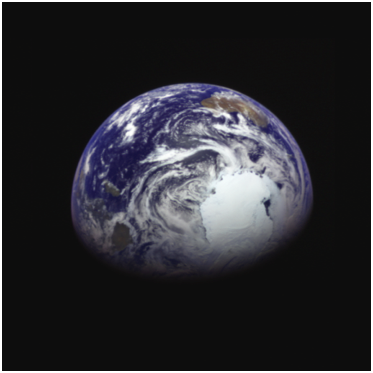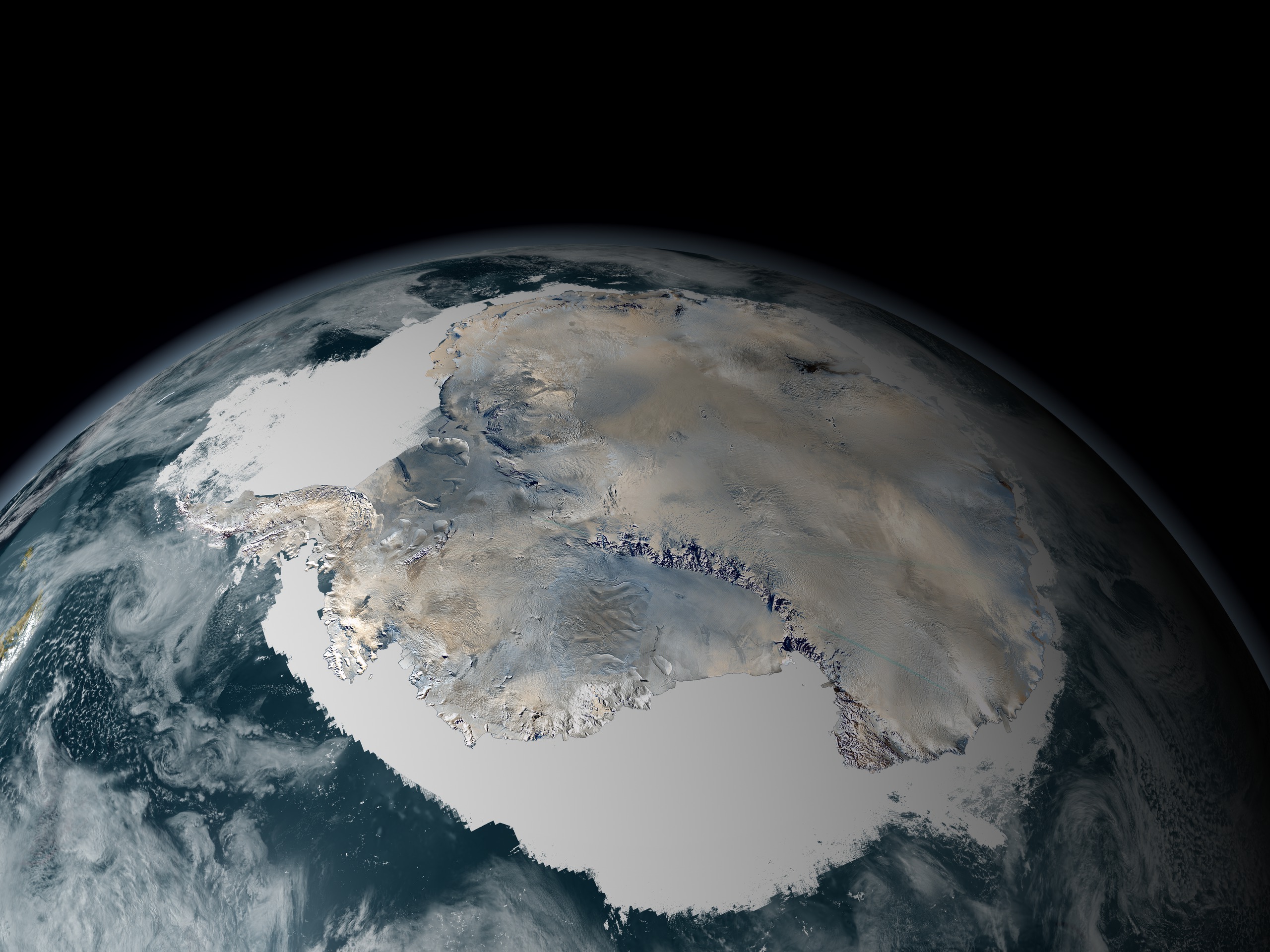[:ja]2015年12月上旬にはやぶさ2が地球スイングバイを無事終え、その後12月4日に地球からの距離約34万kmから撮影した地球の画像がこちらです。南極には夏に日が当たらず、ひまわりなどの気象衛星も南極点付近の撮影は困難なので、貴重な画像です。

温暖化の影響で、北極圏航路が開拓されるなど、最近北極には注目が集まっていますが、南極のニュースを見ることは少ないです。そんな中、最近注目されたのが、NASAが発表した、南極の氷が増えているというニュースです。ちょうど、国連気候変動パリ会議(COP21)の開催タイミングでしたので、様々な議論を喚起しました。
NASAの公式発表によると、「西南極の氷河質量の減少分は、降雪の増えた東部内陸で氷河が厚さを増したことで相殺されている」との結論が述べられ、その結果、南極の氷は毎年およそ1,120億トンずつ増えていると説明しています。
今回の発表は、衛星データに基づいた過去の他の研究と矛盾する結果になっており、異を唱える科学者もいるようです。今後の研究が注目されます。

[Earthview Wonders] No.11: Antarctica from Hayabusa 2
Take a look at the photo of Antarctica taken by Hayabusa 2, an asteroid sample return mission operated by the Japanese space agency JAXA. This photo was captured from 340,000km distance on Dec. 4, 2015 just after Hayabusa 2 completed Earth-swingby. Since Antarctica receives little sunlight during summer and other meteorological satellites locationally find difficulty capturing Antarctica, this is a rare snap.

While Arctic region draws ample attention due to global warming such as efficient shipping routes, news on Antarctica is scarce. So a NASA news on the gains of Antarctic ice had a spotlight per se and stirred up discuttion, coincided with COP21 Paris in session.
According to NASA study, an increase in Antarctic snow accumulation is currently adding enough ice to the continent to outweigh the increased losses from its thinning glaciers by 100 billion tons annually.
This report is incoherent with other preceding research based on satellite data, and some scientists are dubious on the conlusion. Further research is awaited with interest.
 [:en]Take a look at the photo of Antarctica taken by Hayabusa 2, an asteroid sample return mission operated by the Japanese space agency JAXA. This photo was captured from 340,000km distance on Dec. 4, 2015 just after Hayabusa 2 completed Earth-swingby. Since Antarctica receives little sunlight during summer and other meteorological satellites locationally find difficulty capturing Antarctica, this is a rare snap.
[:en]Take a look at the photo of Antarctica taken by Hayabusa 2, an asteroid sample return mission operated by the Japanese space agency JAXA. This photo was captured from 340,000km distance on Dec. 4, 2015 just after Hayabusa 2 completed Earth-swingby. Since Antarctica receives little sunlight during summer and other meteorological satellites locationally find difficulty capturing Antarctica, this is a rare snap.

While Arctic region draws ample attention due to global warming such as efficient shipping routes, news on Antarctica is scarce. So a NASA news on the gains of Antarctic ice had a spotlight per se and stirred up discuttion, coincided with COP21 Paris in session.
According to NASA study, an increase in Antarctic snow accumulation is currently adding enough ice to the continent to outweigh the increased losses from its thinning glaciers by 100 billion tons annually.
This report is incoherent with other preceding research based on satellite data, and some scientists are dubious on the conlusion. Further research is awaited with interest.
 [:]
[:]